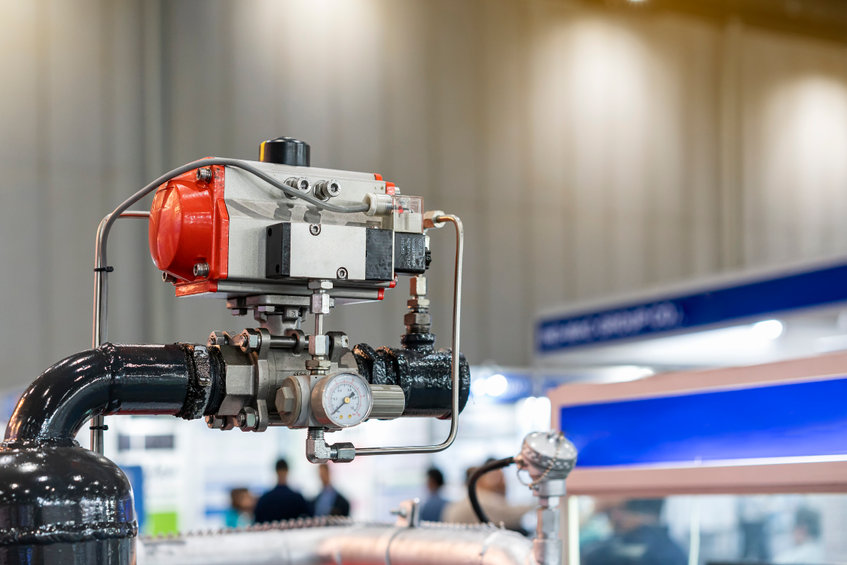Pneumatic Solenoid Valves are Key to Airflow Control
Pneumatic systems are widely used in industrial automation, but for air-operated systems to be precise, responsive and efficient, airflow must be tightly controlled. Pneumatic solenoid valves are key components in pneumatic systems, as they excel at regulating airflow, pressure and direction, helping to optimize the operation of pneumatically driven automated equipment. This blog will explain the function and advantages of using air control valves to achieve precise airflow and quick responsiveness in industrial automation.
What are Solenoid Valves?

What are Solenoid Valves?
A pneumatic solenoid valve is a type of valve that relies on electronic signals to control the flow or direction of air in pneumatic systems. Operation of a pneumatic solenoid valve relies on an interaction between electrical and mechanical components. An electrical current is applied to the solenoid coil to generate a magnetic force, which influences the position of components within the valve, opening or closing the valve, thus regulating and directing the airflow through the pneumatic system.
Two main types of air solenoid valves are used in industrial applications:
- Direct-acting: Direct-acting solenoid valve components include a solenoid coil, a plunger or armature and the valve body that houses these components, as well as inlet, output and exhaust ports. When the solenoid coil is energized, it creates a magnetic field that attracts and moves the armature or plunger, which opens or closes the air control valve, enabling quick response times and precise control of pneumatic system components, such as actuators and cylinders.
- Piloted: Piloted operated solenoid valves require a minimum pilot supply pressure controlled by the solenoid and used to operate the valve mechanism, the solenoid itself is unable to do so. One of the advantages of pilot operated solenoid valves is lower coil power consumption vs direct acting.
To suit a variety of applications, pneumatic solenoid valves are commonly available as two-, three- and four-way valves, as follows:
Four-way solenoid valves
contain two outlet ports, one inlet and one or two exhaust to provide more complex airflow control, including the ability to reverse and stop.
Three-way solenoid valves
have three ports, including an inlet, outlet and exhaust. This design allows control and direction of air between two separate paths.
Two-way solenoid valves
offer two ports – one inlet and one outlet. Airflow is controlled by opening and closing the channel between these ports.
Advantages of Using a Pneumatic Solenoid Valve
These air control valves are widely used in industrial automation applications because they provide a host of advantages, including:
| Precise control | By incorporating fast-acting solenoid valves and actuators, air pneumatic solenoid valves can rapidly move from open to closed, granting precision control of the airflow, direction and pressure. This makes them suitable for use in pneumatically-operated automated equipment that requires precision. |
| Fast response times | pneumatic solenoid valves can change states from open to closed or closed to open very, very quickly, allowing the equipment they serve to respond quickly, but also in a predictable, dependable and repeatable fashion. |
| Energy efficiency | The fast response times permit shorter operating cycles, so pneumatic solenoid valves may consume less electricity during operation. Further, by design, modern pneumatic solenoid valves tend to have optimized flow paths, which reduce energy losses related to pressure drops in the compressed air system. |
| Reliability | pneumatic solenoid valves are proven to offer reliable operation, even in challenging industrial environments. |
| Compact design | The simple design of pneumatic solenoid valves results in a lightweight and compact valve, which makes them easier to incorporate when space is limited. |
| Versatility | Because they are available in different styles and sizes and with a variety of configurations, pneumatic solenoid valves can be used in almost any industrial pneumatic system application from the simple to the complex. |
Essential to industrial pneumatic systems and applications that require precision airflow, quick response times, reliability and efficiency, pneumatic solenoid valves are a key component in hard-working industrial pneumatic equipment. For help selecting the right type and size air solenoid valve for any pneumatically powered automation application that demands fast, precise and repeatable air control, please contact JHFOSTER today.
